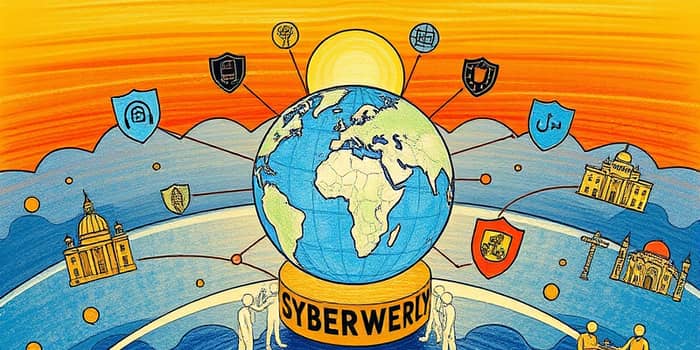In late 2025, the global security environment has become a tapestry of unconventional, fast-evolving, and interconnected risks that defy older models of defense. From high-stakes geopolitical rivalries to cutting-edge cyber offensives and insidious disinformation campaigns, threats now span every dimension of modern life. To thrive in this era of complexity, organizations and nations must cultivate foresight, resilience, and collaboration.
This article unpacks the most pressing dangers, offers actionable strategies for staying ahead, and inspires a unified approach to safeguarding our shared future.
Understanding the New Landscape of Risk
The traditional view of conflict focused on armies on borders. Today, armed clashes are only one facet of a multilayered threat environment. The World Economic Forum reports that state-based armed conflict leaped from fifth to top risk in just two years, while gray-zone tactics and cyber sabotage have proliferated globally.
Economic pressures, demographic shifts, and digital interdependence amplify each other, creating fault lines that adversaries can exploit. Recognizing this interconnectedness is the first step toward building robust defenses.
Geopolitical Shifts and Gray-Zone Warfare
Major powers are investing heavily in wartime preparedness. European nations such as Sweden, Denmark, and Germany are updating civil crisis handbooks and building public bunkers. Meanwhile, Russia seeks to subvert the international order through covert operations, supply-chain disruption, and influence campaigns.
Gray-zone warfare depends on ambiguity. A cyber breach on critical infrastructure or a covert supply shipment delay can sow chaos without triggering open conflict. Develop comprehensive crisis response plans that integrate military, civilian, and commercial stakeholders to counter these stealthy tactics.
Technology-Driven Vulnerabilities
The global AI arms race has raced ahead, with governments adopting a light-touch regulatory approach that leaves powerful tools largely unchecked. Autonomous malware, algorithmically amplified disinformation, and AI-powered surveillance loom large.
Cyber adversaries now favor “malware-free” exploits, zero-day attacks, and social engineering to cripple networks and steal intellectual property. National and corporate leaders must treat cyber defense not as an IT issue, but as a core strategic priority.
Disinformation: The Silent Saboteur
According to recent surveys, 72% of adults across 25 countries view online false information as a top threat. Disinformation undermines public trust, weakens social cohesion, and can tilt elections. As we head toward 2027, it may eclipse conventional military risks in its destructive potential.
Invest in real-time monitoring and rapid response teams that can detect and correct false narratives before they spread. Empower local media outlets with fact-checking resources and public education campaigns to build community resilience.
Building Operational Resilience and Collaboration
Resilience demands more than redundant systems. It requires a holistic approach that spans supply chains, critical infrastructure, and human capital. Organizations should adopt these core measures:
- Proactive threat intelligence and horizon-scanning across multiple domains
- Regular crisis simulations involving public, private, and nonprofit sectors
- Cross-border data-sharing agreements for early warning on emerging threats
- Investment in redundant logistics and diversified suppliers
- Continuous incident response training for all employees
By weaving these elements into daily operations, entities can absorb shocks and adapt rapidly as circumstances shift.
Future-Proofing Through Investment and Education
Long-term security depends on sustained investment in both technology and people. Governments and corporations alike must:
- Allocate budgets for AI-driven defense research and development
- Establish public–private consortia to set adaptive regulatory frameworks
- Promote STEM and cybersecurity curricula at every education level
- Fund international exchange programs for threat intelligence experts
Foster a culture of continuous learning: encourage employees to pursue advanced certifications and simulate real-world threat scenarios. This keeps skills sharp and awareness high.
Key Threats and Recommended Responses
Call to Action: A Shared Responsibility
No organization, government, or community can face these multifaceted threats alone. Strengthen cross-border collaboration frameworks and share best practices to build collective defenses. Engage civil society groups, academia, and private tech firms in dialogue and coordinated action plans.
Leaders must embrace transparency and adaptability, knowing that the methods adversaries use today will evolve tomorrow. By staying vigilant and agile, we can transform emerging threats into opportunities for innovation and unity.
Together, we hold the power to secure a safer, more resilient world for generations to come. It’s time to rise to the challenge, anticipate the next wave of risks, and stay truly ahead of the curve.
References
- https://www.securitas.com/en/newsroom/blog/5-emerging-security-threats-and-risks-in-2025/
- https://www.eurasiagroup.net/issues/top-risks-2025
- https://www.weforum.org/publications/global-risks-report-2025/digest/
- https://www.pewresearch.org/global/2025/08/19/international-opinion-on-global-threats/
- https://www.weforum.org/publications/global-risks-report-2025/
- https://www.crowdstrike.com/en-us/global-threat-report/










